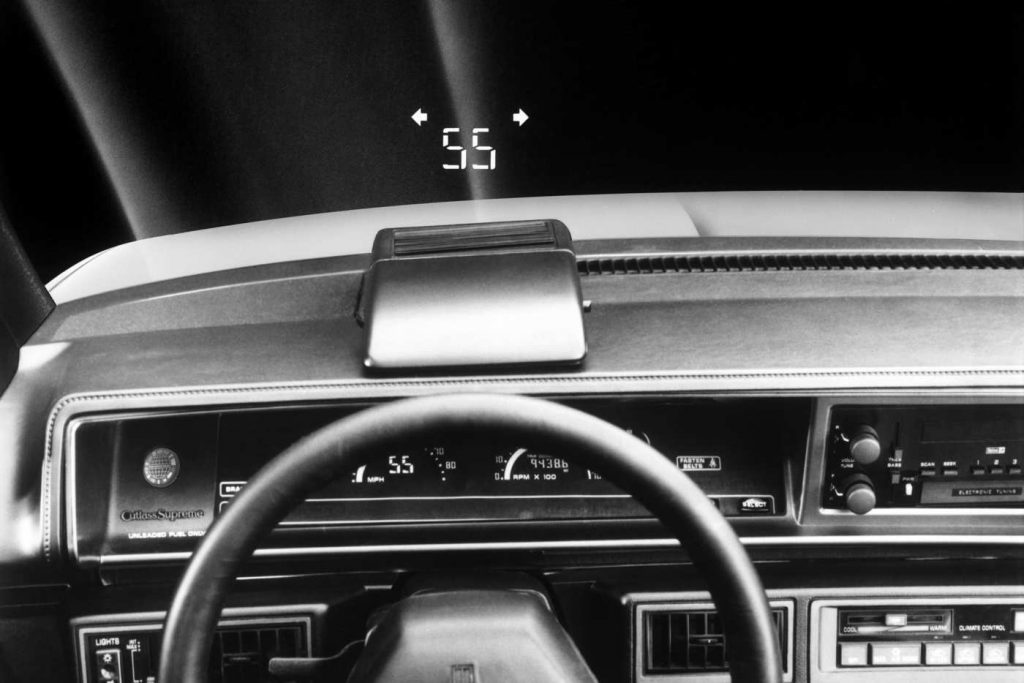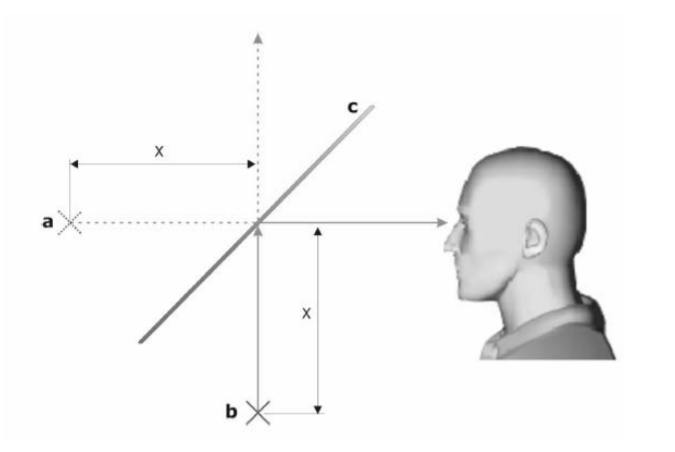Automotive Heads-Up Display
A Heads-up Display (HUD) presents various information in a person’s forward Field of View (FOV). As opposed to traditional Heads-Down Displays (HDD) that are the standard in the modern automotive industry in the form of dashboards where the driver must take their eyes off the road and look down, HUDs allow the driver to keep their head and eyes forward on the road while they view important information such as fuel and speed. The technology encourages safer and more efficient driving.
Historical influences in Heads-Up Display
Heads-Up Displays originate from the Military, implemented into fighter jets. Initial concepts for HUDs were drafted at the height of World War II as a solution for pilots struggling to locate their targets in hostile skies, relying solely on verbal instructions. (BAE Systems 2000, para. 1). Following the wide success and further implementation of HUDs into military vehicles, the technology was considered for civilian and commercial use. In 1988 General Motors was the first to introduce HUDs into the automotive industry. The HUD was the first of its kind as a production option in the Oldsmobile Cutlass Supreme. This HUD presented the speedometer and indicators. (Figure 1). Thereafter, other famous car companies, such as BMW and Peugeot, started to develop HUD‐based vehicles. (Park et al., 2013).

Technical overview of Heads-Up Display
Heads-Up Display technology utilises projection and reflection. The principle is based on optical rules. An image is projected onto a glass window and is partially reflected. The reflected fraction is perceived by the observer as a virtual image. The distance x between the virtual image a and the glass window c is equivalent to the distance x between the image source b and the glass window c (Ablassmeier et al., 2005) (Figure 2).

Park (2019) refers to primary driving tasks and the information related that should be displayed on automotive HUDs, summarised as follows:
- Hazard warnings.
Lane departure warnings, blind spot image, pedestrian warnings.
- Traffic sign/ signal notifications.
Speed limit, highway entrance/exit
- Night vision images.
Highlighted infrared image of pedestrian, night vision alerts of possible hazards.
- Road visibility improvements.
Lane marking for improving road visibility.
- Future state.
Braking distance and future path with current acceleration.
- Driving instructions.
Navigation instructions.
- Route planning information.
Estimated time to destination for alternative routes.
- Driver state/ behaviour feedback.
Driver’s alertness such as attentive, drowsy.
Impact of Heads-Up Displays
Automotive Heads-Up Displays has a significant impact across all communities as it increases safety in driving. If a driver averts their gaze from the road to look at the instrument cluster in the dashboard, their eyes need to adjust to the shorter distance (accommodation). If a driver is travelling at 120km/h, considering the time it takes for a driver to accommodate looking at the dashboard, process the information, and accommodate looking back at the road they will have been driving blind for 33 metres (Continental AG 2015 para. 1). Heads-Up Displays removes the need for accommodation and keeps the driver’s eyes off the road.
Further advancements in HUD technology would be disruptive as it could replace the standard HDD dashboard that is present in all automotive vehicles.
Reference List:
BAE Systems, 2010, BAE Systems Website, accessed 18/04/2019,
https://www.baesystems.com/en/feature/our-innovations-hud#
Park, H. S., Park, M. W., Won, K. H., Kim, K. and Jung, S. K. 2013, “In‐Vehicle AR‐HUD System to Provide Driving‐Safety Information”, ETRI Journal.
Ablassmeier, M., Mcglaun, G. and Rigoll, G., 2005. “Evaluating the potential of head-up displays for a multimodal interaction concept in the automotive environment”, Proc. of WMSCI 2005, The 9th World Multi-Conference on Systemics, Cybernetics and Informatics.
Juhee Park, Woojin Park, “Functional requirements of automotive head-up displays: A systematic review of literature from 1994 to present”, Applied Ergonomics, Volume 76, 2019, Pages 130-146
Continental AG, 2015, Continental Website, accessed
20/04/2019
http://continental-head-up-display.com/
